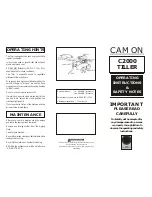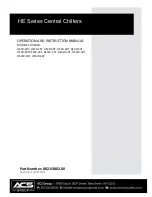
JOHNSON CONTROLS
23
FORM 160.77-O1
ISSUE DATE: 10/22/2020
SECTION 3 - MAINTENANCE
TABLE 1 -
SYSTEM PRESSURES
*GAUGE
ABSOLUTE
BOILING
TEMPERATURES
OF
WATER
°F
INCHES OF
MERCURY (HG)
BELOW ONE
STANDARD
ATMOSPHERE
PSIA
MILLIMETERS
OF MERCURY
(HG)
MICRONS
0"
14.6960
760.00
760,000
212
10.240"
9.6290
500.00
500,000
192
22.050"
3.8650
200.00
200,000
151
25.980"
1.9350
100.00
100,000
124
27.950"
0.9680
50.00
50,000
101
28.940"
0.4810
25.00
25,000
78
29.530"
0.1920
10.00
10,000
52
29.670"
0.1220
6.30
6,300
40
29.720"
0.0990
5.00
5,000
35
29.842"
0.0390
2.00
2,000
15
29.882"
0.0190
1.00
1,000
1
29.901"
0.0100
0.50
500
–11
29.917"
0.0020
0.10
100
–38
29.919"
0.0010
0.05
50
–50
29.9206"
0.0002
0.01
10
–70
29.921"
0
0
0
*One standard atmosphere = 14.696 PSIA
= 760 mm Hg. absolute pressure at 32°F
= 29.921 inches Hg. absolute at 32°F
NOTES: PSIA = Lbs. per sq. in. gauge pressure
= Pressure above atmosphere
PSIA = Lbs. per sq. in. absolute pressure
= Sum of gauge plus atmospheric
pressure
Water
Freezes
bulb temperature of +32°F (0°C) or a pressure of
for corresponding pressure values.
4. To improve evacuation circulate hot water, not
to exceed 125°F (51.7ºC) through the evapora-
tor and condenser tubes to thoroughly dehydrate
the shells. If a source of hot water is not readily
available, a portable water heater should be em-
ployed. DO NOT USE STEAM. Another sug-
gested method is to connect a hose between the
source of hot water under pressure and the evapo-
rator head drain connection, out the evaporator
vent connection, into the condenser head drain
3
VACUUM TESTING
After the pressure test has been completed, the vacuum
test should be conducted as follows:
1. Connect a high capacity vacuum pump, with in-
dicator, to the system charging valve as shown in
and start the pump. Refer
to
Vacuum Dehydration
in this section.
2. Be sure all valves to the atmosphere are closed
and then open wide all system valves.
3. Operate the vacuum pump in accordance with
Vacuum Dehydration
in this section until a wet












































